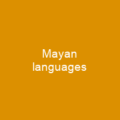Nafaanra is a Senufo language spoken in northwest Ghana, along the border with Ivory Coast, east of Bondoukou. Its speakers call themselves Nafana, but others call them Banda or Mfantera. The language is the second language of the approximately 70 Dompo people living in the close vicinity of Banda.
About Nafaanra in brief
 Nafaanra is a Senufo language spoken in northwest Ghana, along the border with Ivory Coast, east of Bondoukou. Its speakers call themselves Nafana, but others call them Banda or Mfantera. The basic word order is subject–object–verb, like Latin and Japanese. It is bordered by Kulango languages to the west, while Deg and Gonja are found to the north and east. The closest eastern neighbour is the Mande language Ligbi, whose speakers are also called Banda. The language is the second language of the approximately 70 Dompo people living in the close vicinity of Banda, and was thought to be extinct until a field work trip of Blench in 1998 proved the contrary. Many Nafanas are bilingual in Twi, the regional lingua franca, to some extent. According to SIL, 50% of the people are able to speak Twi with sufficient structural accuracy and vocabulary to participate effectively in most formal and informal conversations on practical, social, and occupational topics. The remaining 30% are either able to maintain only very simple face-to-face conversations on familiar topics or unable to speakTwi at all. NafaanRA grammar features both tense and aspect which are marked with particles. Numbers are mainly formed by adding cardinal numbers to the number 5 and by multiplying the numbers 10, 20 and 100.
Nafaanra is a Senufo language spoken in northwest Ghana, along the border with Ivory Coast, east of Bondoukou. Its speakers call themselves Nafana, but others call them Banda or Mfantera. The basic word order is subject–object–verb, like Latin and Japanese. It is bordered by Kulango languages to the west, while Deg and Gonja are found to the north and east. The closest eastern neighbour is the Mande language Ligbi, whose speakers are also called Banda. The language is the second language of the approximately 70 Dompo people living in the close vicinity of Banda, and was thought to be extinct until a field work trip of Blench in 1998 proved the contrary. Many Nafanas are bilingual in Twi, the regional lingua franca, to some extent. According to SIL, 50% of the people are able to speak Twi with sufficient structural accuracy and vocabulary to participate effectively in most formal and informal conversations on practical, social, and occupational topics. The remaining 30% are either able to maintain only very simple face-to-face conversations on familiar topics or unable to speakTwi at all. NafaanRA grammar features both tense and aspect which are marked with particles. Numbers are mainly formed by adding cardinal numbers to the number 5 and by multiplying the numbers 10, 20 and 100.
It has a noun class system, with nouns classified according to five different classes, which also affects pronouns, adjectives and copulas. There are also three distinct tones, a feature shared with the otherSenufo languages. The Banda dialect is considered central. The terms “Fantera” and “Pantera” come from other peoples and are considered pejorative by the Nafanas. The Nafano people say that they come from a village called Kakala in Ivory Coast. Their oral history says that some of their people are still there, and if they go back they will not be allowed to leave again. They arrived in the Banda area after the LigBi people, who came from Begho to the area in the early 17th century. The people of the Brong-Ahafo Region of Ghana live in the north-west corner of Ghana, concentrated mainly in Sampa and Banda and are known as the ‘Nafana’ The language has a 79% cognate relationship on the Swadesh list between the two dialects, meaning that they have many basic words in common. The relatively low scores of about 60% to 60% establish an intercompensibility factor of 38% with 38% of Palyaka Palyessaka, Kabre and Dogon languages. This is the only dialect that is distantly related to this dialect.
You want to know more about Nafaanra?
This page is based on the article Nafaanra published in Wikipedia (as of Oct. 31, 2020) and was automatically summarized using artificial intelligence.







